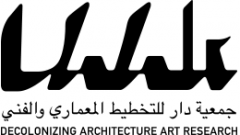In Jenin, where remains also exist, the station has attracted a new intensity. The area of this station, which was once part of a military base, has been transformed into a refugee camp. As the camps are the embodiment of exile and disconnection, the memory of the railway plays a particularly strong role there. For the refugees, life revolves around the notion of return, return to the villages of origin. A return would also entail a reconnection to the cities and the Mediterranean that were once part of a continuous geography, interconnected through the extensive railway network.
Absorbed into the density of the camp, the station building has been re-appropriated, mainly for commerce and storage. However, in spite of adapting to the present demands and construction practices of the camp, the structure has maintained its special character. The station’s typical volume and details, which are immediately recognizable, evoke the history and a vague memory of its former role. As an affirmation of this memory, the camp inhabitants have initiated a renovation plan for the station with the intent of rehabilitating it as a library or museum. In contrast to the present use of the building for private purposes, the renovation of the building could bring back its role in helping to form a collectivity in the camp. Between a restoration to its original state—a museum of former function—and its current condition—an adapted commercial space—the station could become a different node, a space of encounter and exchange, suggesting the possibility of the region’s reconnection.
In their efforts against normalization, the refugees do not only live the return as an imaginary future. In the camp, return also has a present dimension, a future ideal is grounded in present practices and today’s material reality. The station at Jenin could on one hand give space to collective practices and on the other, with its strong symbolic presence, represent on a larger scale the struggle for mobility.


